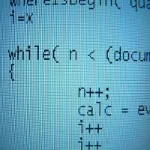The Formula for Software Quality
How do you define the quality of a software product? There is definitely an intrinsic emotional component to it, which means satisfaction for the user, willingness to pay, appreciation, positive attitude, and all that. However, if we put emotions aside, how can we really measure it? The IEEE says that quality is the degree to which a product meets its requirements or user expectations. But what is the formula? Can we say that it satisfies requirements and expectations to, say, 73%?
Here is the formula and the logic I’m suggesting.
As we know, any software product has an unlimited number of bugs. Some of them are discovered and fixed by the development team, let’s call them F. Some of them are discovered by the end users, let’s call them U. Thus, the total amount of bugs we are aware of, out of an infinity of them, is F+U.
Obviously, the smaller U is, the higher the quality. Ideally, U has to be zero, which will mean that users don’t see any bugs at all. How can we achieve that, if the total amount of bugs is infinite? The only possible way to do it is to increase F, hoping that U will decrease automatically.
Thus, the quality of a product can be measured as:
We simply divide the amount of bugs found by the total amount of bugs visible. Thus, the more bugs we manage to find before our users see them, the higher the quality.
A quality of 100% means that no bugs are found by the users. A quality of 0% means that all bugs are found by them.
Does it make sense?
| Published on Java Code Geeks with permission by Yegor Bugayenko, partner at our JCG program. See the original article here: The Formula for Software Quality Opinions expressed by Java Code Geeks contributors are their own. |





